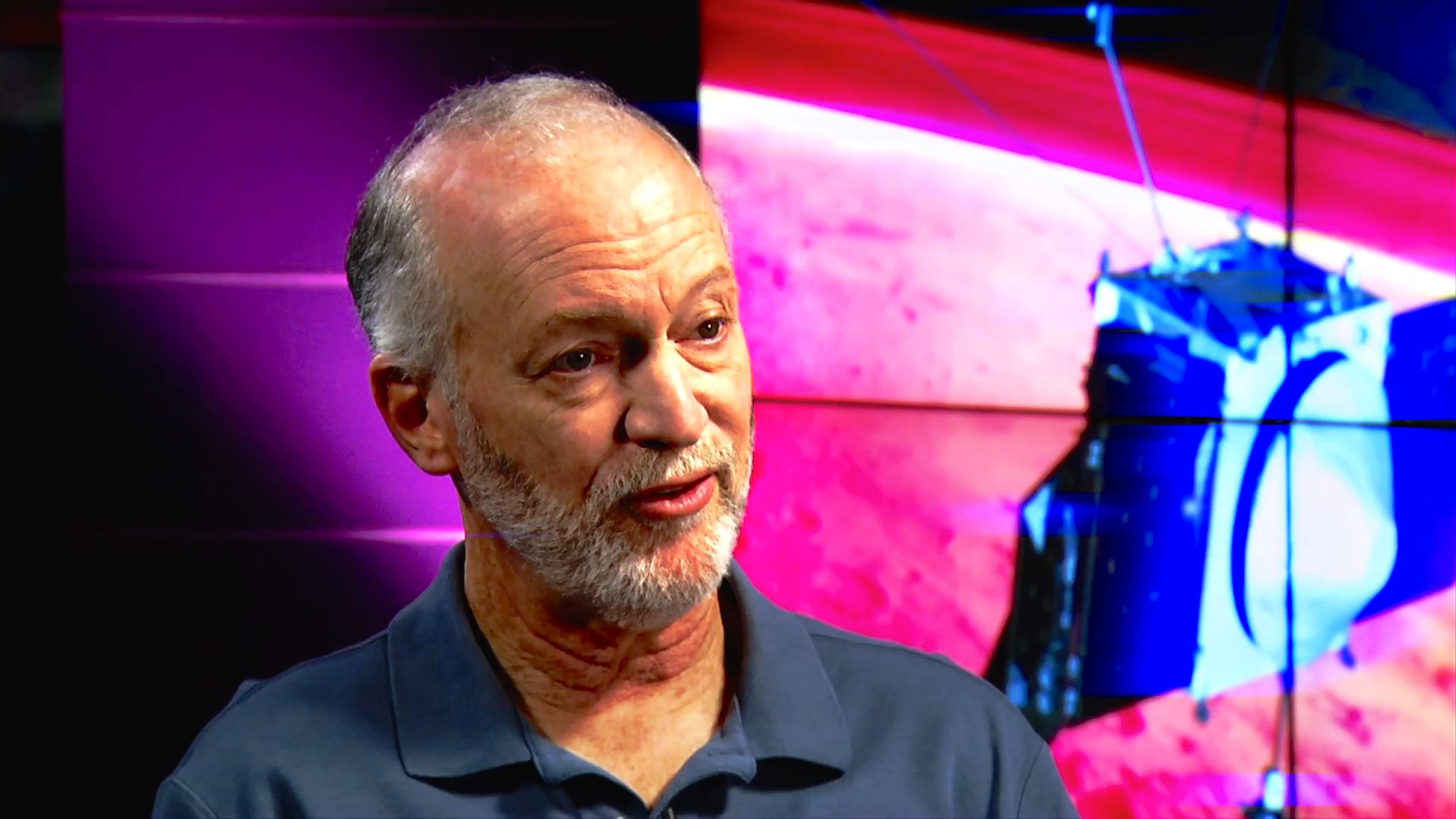Imaging Stars From Mars

A NASA spacecraft uses starlight to probe the composition of Mars’ upper atmosphere.
High above the thin Martian skies, NASA’s MAVEN spacecraft is carrying out a mission: determine how Mars lost its early atmosphere, and with it, its water. While previous Mars orbiters have peered down at the planet’s surface, MAVEN is spending part of its time gazing at the stars, looking for subtle changes in their color as they dip through the limb of Mars and set below the horizon. Such stellar occultations reveal what the atmosphere is made of, and how its composition varies with altitude. MAVEN’s observations are providing the most detailed picture of Mars’ upper atmosphere to date, helping scientists understand how it turned from a warm and wet planet into the forbidding desert that we see today. Watch the video to learn more.
Find out more about how NASA's MAVEN spacecraft explores Mars in this video.

The MAVEN spacecraft entered Mars orbit on Sept. 21, 2014.

As MAVEN circles the planet, its Imaging Ultraviolet Spectrograph instrument observes the light from setting stars.

By measuring how a star changes color as it dims, scientists can determine the composition of the Martian atmosphere at varying altitudes.
Credits
Please give credit for this item to:
NASA's Goddard Space Flight Center
-
Writer
- Dan Gallagher (USRA)
-
Scientist
- Bruce Jakosky (LASP)
-
Producer
- Dan Gallagher (USRA)
-
Animators
- Walt Feimer (HTSI)
- Brian Monroe (USRA)
- Michael Lentz (USRA)
- Chris Smith (Self)
- Kel Elkins (USRA)
- Greg Shirah (NASA/GSFC)
-
Video editor
- Dan Gallagher (USRA)
-
Videographer
- Rob Andreoli (Advocates in Manpower Management, Inc.)
-
Project support
- John Caldwell (Advocates in Manpower Management, Inc.)
Release date
This page was originally published on Tuesday, September 8, 2015.
This page was last updated on Wednesday, May 3, 2023 at 1:49 PM EDT.


